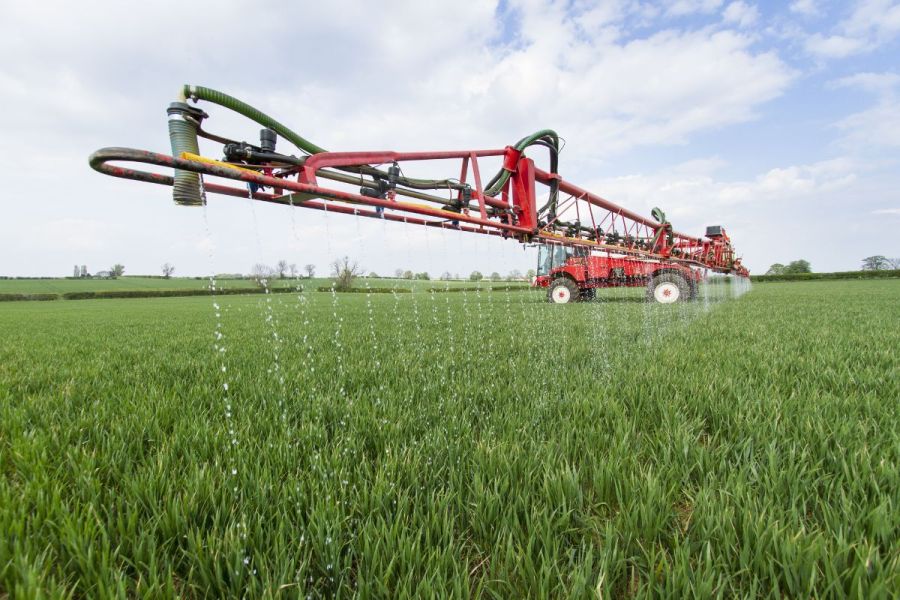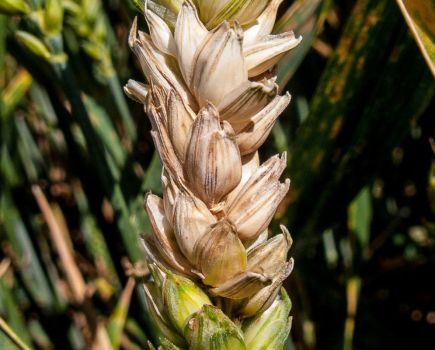Regulations are now in place which restrict the use of urea fertilisers and it’s anticipated this will lead to a surge in uptake of urease inhibitors. CPM looks at the latest on a product which promises to deliver the goods for both the environment and farm businesses.
“Where there’s risk, we advise using inhibited urea not because of regulation, but because it’s the right thing to do.”
By Janine Adamson
The new urea fertiliser regulations – they could be viewed as both an opportunity and a threat. Although uptake of inhibitors has been slower than expected so far, Omex Agriculture’s David Booty believes this could be a chance to demonstrate positive industry action.
“If growers don’t abide by the rules, the regulations will tighten further and it’s likely Defra will legislate. However, this is an opportunity for a clean slate by showing a proactive response to a problem. It could be a real success story for British agriculture,” he says.
Monitored as a new Red Tractor farm assurance standard, the regulations apply to any fertiliser that contains more than 1% of urea nitrogen, with two timeframes in place – untreated solid urea/liquid UAN fertiliser can be applied between 15 January to 31 March each year, whereas outside of this, a urease inhibitor must be used.
And the reason why? Urease inhibitors work by blocking the urease enzyme found in nature from hydrolysing urea and leading to ammonia losses in some situations. It’s believed doing this will help to meet the government target of reducing ammonia emissions by 70%.
In terms of the three recognised urease inhibitors, David says NBPT (N-(n-butyl) thiophosphoric triamide) is the only one that can reliably deliver the 70% reduction targets the government is seeking. “It’s the most obvious active ingredient to use, so now it’s a case of getting everyone on board with using urease inhibitors,” he comments.
Although NBPT has been available as an active for around two decades, having originated in the USA, interest in the UK primarily came about in response to the government targets.
This resulted in NitroShield – an NBPT-based urease inhibitor for use with liquid nitrogen applications. David says one of its selling points is the fact it’s supplied as a separate product. “Inhibitors become most relevant in high risk scenarios so really, they want to be used when it’s truly necessary.
“It’s back to the old adage of applying the right product at the right time; all with a view to avoiding waste,” he says.
This is a mantra which no doubt strikes a chord with Velcourt’s technical director, Nick Anderson. He says the Red Tractor farm assurance standard should be the bare minimum because the risk of volatilisation doesn’t start on a given calendar date.
“Where there’s risk, we advise using inhibited urea not because of regulation, but because it’s the right thing to do,” he says.
Nick explains that Velcourt has been taking a close look at NUE measurements for the past two years and the reasons behind poor nitrogen recovery. “If it’s not recovered it’s wasted, harming the environment and having an impact on farm business ROI. That’s why it’s important to identify sources of inefficiency, which are most likely to be biological lock up, leaching during winter, or in this case, volatilisation from urea fertiliser.”
The company has been undertaking trials to evaluate urease inhibitors which according to Nick, clearly demonstrate that the technology increases the amount of nitrogen recovered.
Looking specifically at NitroShield, field trials on winter wheat are comparing a range of nitrogen (Nitroflo 30) rates from 0 to 240kgN/ha applied mid-March and mid-April, with and without NitroShield.
Nick says so far, the trial results look promising in terms of Nitrogen Fertiliser Use Efficiency (NfUE). But recognising the importance of replicated data across years, OMEX and Velcourt have committed to another season of trials focusing on the continual development of inhibitor use in real-life farm practice. Nick says this is to ensure growers are equipped with the most accurate scientific data to achieve the best outcome for their farm.
But what’s understood so far about volatilisation and urease inhibitors from a practical perspective? In terms of conditions, Velcourt agronomist Tom Watkins says dry, warm and windy are most conducive to volatilisation and therefore day-by-day assessments should be made before taking action. “As climatic conditions become increasingly unpredictable, the UK can certainly experience those conditions before the stipulated date of 1 April.”
He agrees that a benefit of NitroShield is its flexibility. “As with all inputs, they should only be used when truly required to minimise wastage. Being a separate product makes this easy to achieve. Equally for the operator, it’s simply added to the induction hopper and it’s business as usual.”
Tom believes the facts make sense and using urease inhibitors addresses a lot of key objectives. “It’s a conscious product – it improves NUE while making a positive contribution to the environment.”
Omex has also conducted three years of trials on NitroShield. These demonstrate that the product meets the government target of reducing ammonia emissions by 70% when mixed with Nitroflo or Nitroflo S grades prior to application.
The trial work was conducted in UK conditions, which David says is critical. “Trials have taken place both in the lab and in-field, so we’re confident that the product will deliver consistent results for UK growers.
“Application-wise, rates can be reduced when soils are neutral or slightly acidic, or the crop canopy provides full coverage of the soil, the ambient temperature isn’t expected to be more than 15oC within 24 hours of application, or a FACTS-qualified advisor has recommended,” he explains.
“Full rates should be used when soils are alkaline (pH>7.0) or when the crop canopy doesn’t provide full coverage of the soil, or the ambient temperature is expected to exceed 15oC within 24 hours of application.”
On the topic of soils, David stresses that NitroShield doesn’t have a long-term effect on soil biology, despite the reservations of some growers. “The role of inhibitors has been a topic of discussion especially within the regenerative agriculture community.“It’s important to outline that inhibitors have been robustly tested and evaluated by independent institutes such as Rothamsted Research and Teagasc to assess microbial activity. Unsurprisingly, there isn’t a long-term effect. Avoiding volatilisation on the soil surface incurs a delay for just a few days, so without lasting potency, there can’t be a lasting impact on soil health,” he concludes.
Untreated liquid UAN fertiliser can be applied after 1 April if agronomic justification is provided by a FACTS-qualified advisor to demonstrate ammonia losses will be at or below the level of including a urease inhibitor.
This article was taken from the latest issue of CPM. Read the article in full here.
For more articles like this, subscribe here.
Sign up for Crop Production Magazine’s FREE e-newsletter here.




